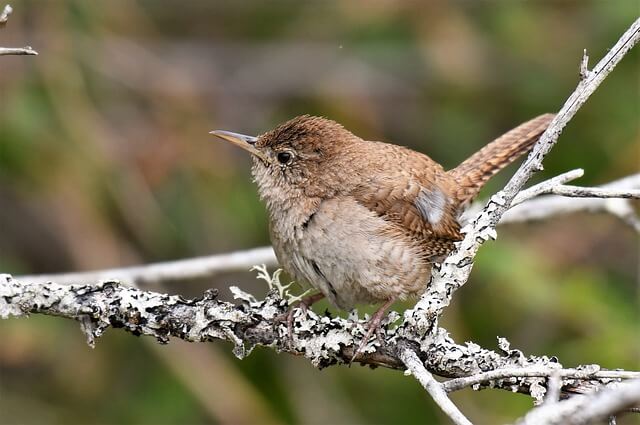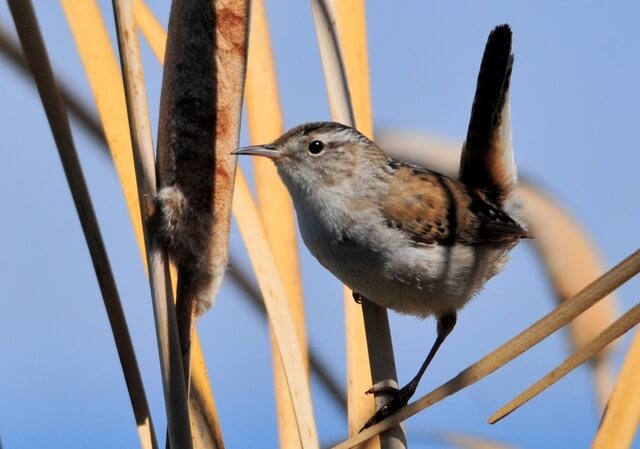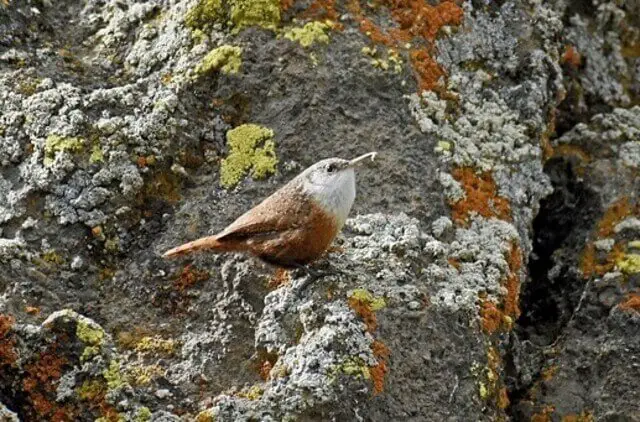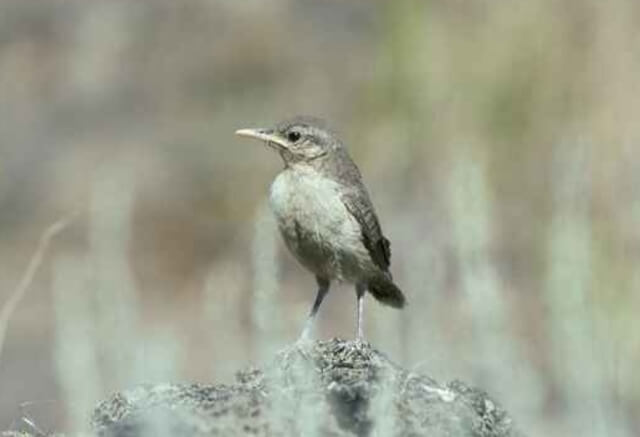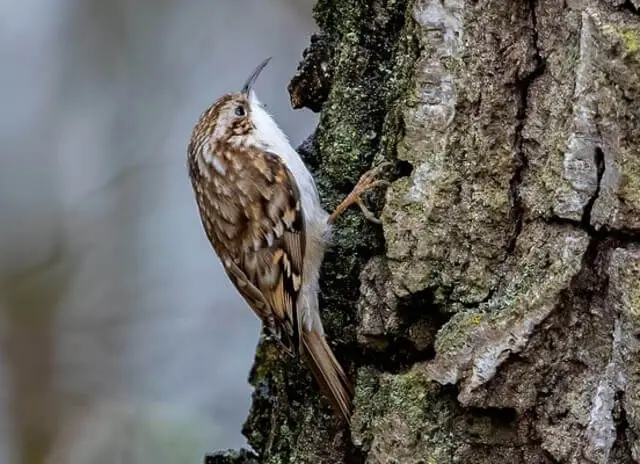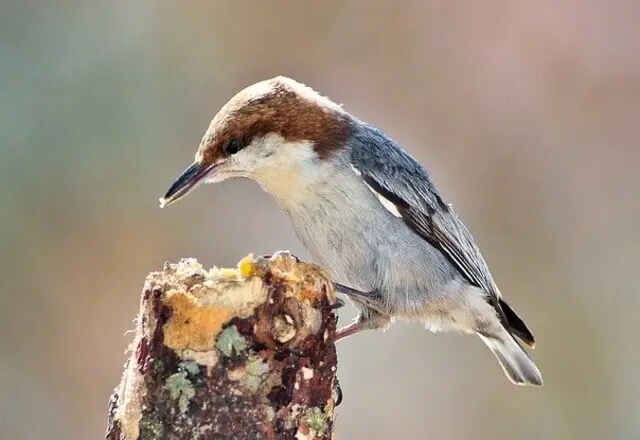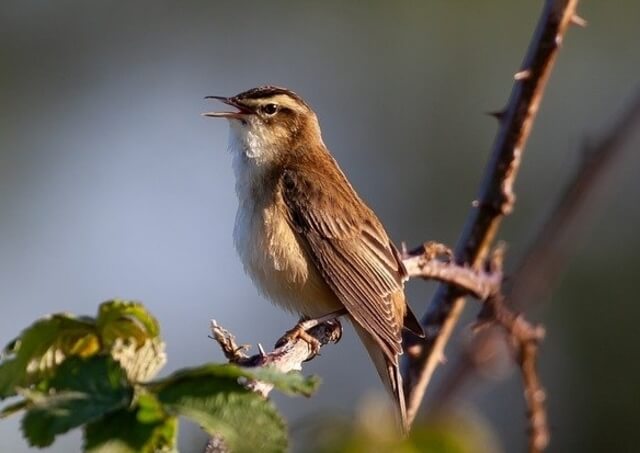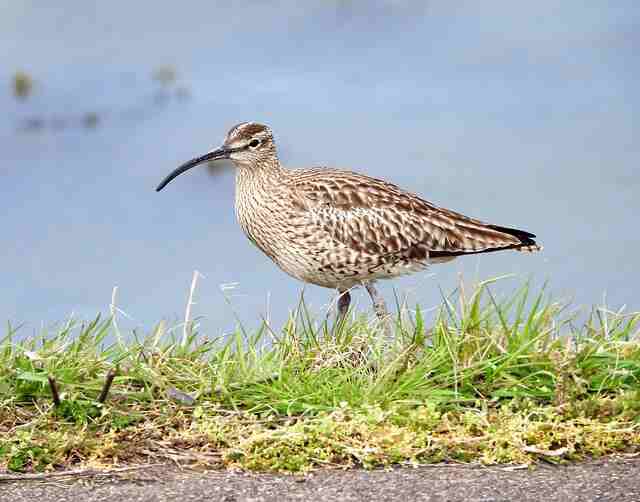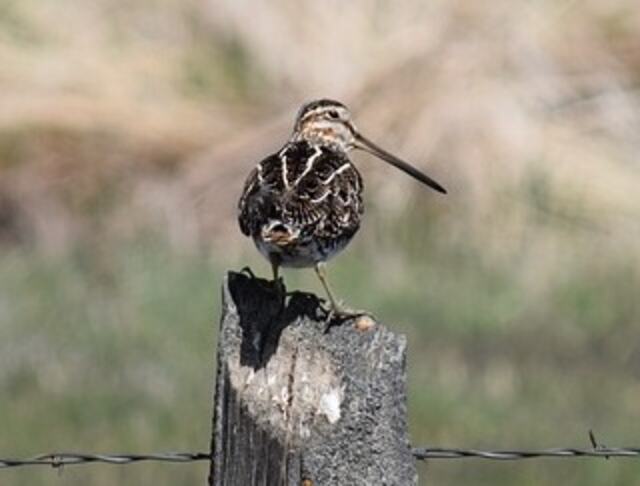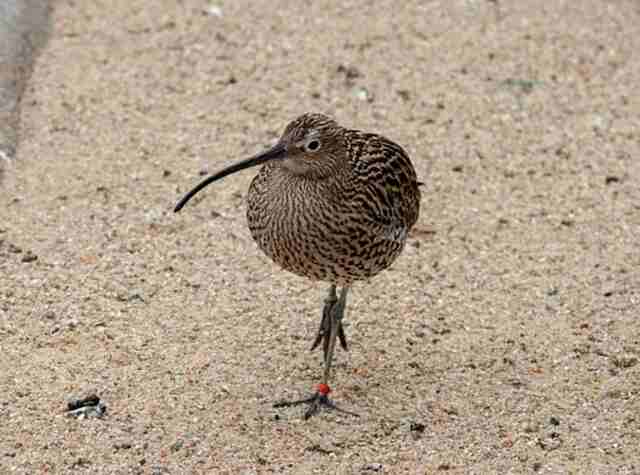Birds are a very interesting and diverse group of animals. They come in all shapes, sizes, colors, and forms. There are many types of birds in the world, with some that we know well and others that we don’t know much about at all.
In this article, we have compiled a list of 15 small brown birds with long beaks to help educate readers on these often overlooked species.
Table of Contents
Bewick’s Wren
Bewick’s Wrens are small brown, compact birds measuring just 5.5″ inches in length, that typically live in the eastern United States. One of their defining features is a long beak that curves down. The long beak is used to reach deep into the ground for food. They are typically found in wetland areas and moist forests.
They do not migrate to warmer climates during winter like other birds. The Bewick’s Wren nests near water sources, usually in natural cavities or woven nests they make themselves. These birds feed mostly on insects found in grasses or shrubs and will eat seeds as well if they are available.
Carolina Wren
The Carolina Wren is a small brown songbird that lives in North America, with an average body length of 4.8 inches and a weight of 20 grams. The bird’s most notable feature is its elongated beak. Their long, slender, pointed bill enables Carolina wrens to build nests, as well as probe deep into small spaces in search for insects and spiders.
These birds live in many habitats such as marshes, wetlands, woodland edges, suburbs and parks. Some people think they are cute, while others find them to be annoying because of their constant singing or chirping sound.
Related Article: How to Attract Wrens to your Backyard?
House Wren
House Wrens are small, chunky birds native to North America, measuring just 5″ inches in length with long curved beaks, and brown backs and white under parts. They have small bills and a short tail. Their wings are pointed, and they look like something halfway between a sparrow and a robin.
House Wrens also have the ability to produce rhythms in their song similar to that of a cowbell. The House Wren is named for its love of building nests in the attics, eaves, towers or other human-made structures of buildings such as churches or office buildings.
Winter Wren
Winter Wrens are small birds with an average measurement of 4″ inches in length, that live in the Arctic regions of North America, Europe, Asia, and Arctic Ocean islands. They have a small, rounded head, long pointy beak, with medium-short fine, brownish-gray colored feathers on their crown, back, wings, and tail. Their throat and breast are grayish while their belly is white.
Winter Wrens migrate from their winter nesting sites in North America to Spain and back again during the spring and summer. These wrens live in marshes, bogs, fens with mixed grasses or sedges, willow thickets or coniferous forests with alder trees. Winter Wrens feed on insects, spiders, snails, and other invertebrates.
Marsh Wren
Marsh Wrens are native to Canada, and primarily inhabit wetlands and woods woodlands across southern Ontario and Quebec provinces of Canada. They are also found in the northern United States and Mexico. The Marsh Wren are chestnut brown, with white barring on the wings and tail, and a white underbelly. They have long thin curved yellow beaks, legs, and feet.
The size of the marsh wren varies depending on its sex, with males being smaller than females. Males are 4.0-5.5 inches (10-14 cm) long and weigh 0.3-0.5 ounces (9-14 g). Females are 4 to 5 inches (10 to 12 cm) long and weigh 0.4 to 0.6 ounces (11-17 g). The marsh wren is a small bird that lives in marshes and bogs.
Sedge Wren
Watch out for Sedge Wrens! These birds are brown with black and white streaking on the upper parts including the head. They have buff underparts, chestnut flanks and long thin beaks. Sedge wrens are small birds measuring just 4.0–4.5″ in. in length and weighing 0.33 – 0.44 oz.
They can be found throughout North America, Central America, Europe and Asia. They inhabit marshes, prairies, meadows and other grasslands with dense vegetation, and feed on insects and spiders found on plants, ground or water surface.
Canyon Wren
The Canyon Wren is a small bird that is usually found in dry, rocky canyons. The canyon wren’s have a long thin beak with white throat and chest and its feathers are rust brown, with dark stripes running down its back. They have a length of approximately 4.5-6.1 in ,and a weight of 10-18.5 grams.
These birds can be found living near water sources and are usually found around bodies of water such as lakes, rivers, or streams. They feed on insects and larvae but will also eat seeds from grasses, weeds, wild berries, corn and wheat.
Rock Wren
Rock Wrens are a small, brown bird that is easy to miss. They inhabit the western United States and Mexico. The Rock Wren lives in rocky canyons or cliff sides where they can find shelter from predators. It has a long, slender bill which it uses to hunt for insects on the ground or under rocks and logs.
The Rock Wren builds its nest near water sources so that it can have access to food when needed during dry seasons of little rainfall. They nest in crevices, holes, or behind stones on the ground.
Cactus Wren
The Cactus Wren is a common bird in the Southwest United States. They are brown and black, with spots on their backs. The wings and tail have black barring that make them easy to identify from other birds of the same color.
Cactus Wrens can be found around water sources like ponds or streams as well as human settlements including gardens, parks, yards, farms and towns. This wren usually builds its nest in bushes or cacti with spines for protection from predators such as coyotes, bobcats, raccoons, snakes and owls
Brown Creeper
The Brown Creeper is a type of bird that is typically found in North America. The brown creeper has feathers that are mostly brown with some white and black spots on them. They have black eyes, a long thin beak, and short legs with strong claws.
The Brown Creeper has the ability to cling to branches without falling off by bending their body and tail, so they can fit between the branches while balancing themselves using their claws as anchors for stability. The Brown Creeper uses its sharp beak to cut through bark in search of insects like ants or beetle larvae.
Brown-headed Nuthatch
The Brown-headed Nuthatch is a small bird that inhabits many regions in North America. These birds are about the size of a sparrow and have brown crowns, grayish blue backs and wings, and buff colored underneath.
The Brown-headed Nuthatch eats insects and seeds from pine cones, acorns, berries, and other fruit. This species typically makes its home in forests or dense undergrowth where it can find shelter from predators such as cats or foxes.
Sedge Warbler
Sedge Warblers are often found in the United States. They can be seen from Alaska to Florida and even on many Caribbean islands. The Sedge Warbler is about five inches long, with a chestnut-brown back and wings.
It has an olive-green head and throat with a black cap, white eye ring, and light gray underparts. They have a thin bill that they use for eating insects off of plants or ground litter on the forest floor.
Whimbrel
The Whimbrel, a rad medium-sized wading bird, is quite the jetsetter, breeding in the chilly Arctic regions of North America, Europe, and Asia. It’s got a killer sense of style with a long, curved bill that it uses to dig up grub in the sand or mud, and a trendy mottled brown plumage to blend into its surroundings.
Covering up to 4,000 miles to reach its winter digs in South America, Africa, and Australia. You can catch these hip birds hanging out in small flocks by the shoreline, snacking on crabs, insects, and other tiny critters. Unfortunately, Whimbrel populations are on the decline due to habitat loss and hunting, so conservation efforts are crucial.
Wilson’s Snipe
Meet Wilson’s Snipe, a medium-sized and stocky shorebird that is commonly spotted throughout North America, particularly in wetland habitats such as marshes, bogs, and swamps. These fascinating birds use their long, slender bills to probe the mud for invertebrates. During their courtship display, they produce a unique sound, which involves a zigzag pattern and rapid flapping of their wings.
Wilson’s Snipe are experts at blending into their surroundings with their mottled brown and gray plumage. These birds are also a favorite game bird, prized for their challenging flight patterns. Despite this, their populations remain stable, and they are not considered to be a species of conservation concern.
Kiwi
Behold the kiwi bird, a peculiar native of New Zealand with a distinct charm and behavior. Its plump, circular body features a protracted, needle-like beak that it skillfully employs to dig out tiny insects and other minuscule invertebrates from the earth. This feathered friend boasts short, rudimentary wings that it tucks away, a nub of a tail, and is largely active during the night.
The kiwi’s versatility extends to its choice of habitats, from wooded areas to meadows to the quaint backyards of suburban neighborhoods. Tragically, the kiwi’s existence is under severe threat from vanishing habitats and invasions by predators like rats, stoats, and feral cats, necessitating prompt and robust conservation measures.
Related Post: 11 Birds with Hooked Beaks and Talons




